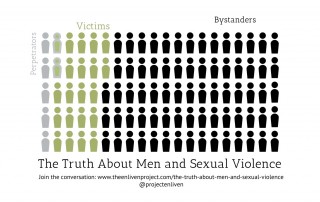According to the Bureau of Labor Statistics, younger baby boomers have held, on average, 11 jobs between ages 18 and 44. This same cohort has experienced, on average, 5.2 spells of unemployment. While the numbers for Millennials might adjust slightly up or down, this data drives home two simple facts: Over the course of your lifetime, you will likely spend time unemployed. Over the course of your lifetime, you are likely to switch jobs. What does this mean? It means that there is no shame in switching jobs, and while it may seem scary, it’s a to-be-expected part of managing your career. There are lots of reasons that it might be time to switch jobs: You have outgrown your current position and there is no place else to go. You have learned all there is to learn, and your job is so easy that it has become boring. In some organizations, there may be opportunities to advance – especially if you help identify and train someone to take your place AND have built a positive brand in your current role. But some organizations have specific roles that need to be filled, and need people in those jobs who enjoy what they are doing and do it enthusiastically. Maybe this isn’t you anymore. You want to explore a new area of interest or develop a new skill. I once had an administrative assistant who wanted to be a photographer. While there were possibly one or two opportunities each year where she could put these skills to use, her primary job was to be my assistant and manage my schedule – two things she really didn’t want to do. It was a tough situation because there was [...]
Secrets to a Happy Fundraising Career (and a sane one too)
Development professionals are a unique breed. We are a critical part of any nonprofit organization yet our work lives are necessarily externally facing. We face intense pressures and high expectations, and while we are (often) compensated well for it, it takes its toll. Within organizations, there are a lot of negative myths and misperceptions about development, fundraisers, and even wealth itself. Furthermore, many executive directors have never held a formal development position, which can result in a major disconnect around development strategy and organizational priorities. It’s no wonder that according to a recent study by CompassPoint 50% of fundraisers are actively looking for another profession and 50% of executive directors report they can’t find high-quality candidates. As someone who has worked in development for 15 years in multiple roles at multiple institutions, there are a few things that I do to make sure that I stay happy and sane in my job. Find the kernel of truth. Fundraising is all about integrity. I look people in the eye and ask them for real money. I can’t ask for funding if I don’t authentically connect to the mission of the organization and believe in the people who are hired to implement it. Otherwise, I’m asking philanthropists – whether individuals, foundations, or corporations – to waste their money. Whether you connect with a specific program, staff person, or story, figure out a way to make the asking authentic each and every time. Build a kitchen cabinet. If you are doing it right, fundraising is a lonely job. Your relationships with external partners and prospects come first, not your relationships with your colleagues. Throughout my career, I’ve always invested in peer relationships that can give me a [...]
How I stopped leaning into my career and started leaning into my life
I thought I knew a lot about Having it All and Leaning In. I’m pretty much the poster child for Leaning In. Really, Sheryl Sandberg would be proud. I’ve never been afraid to be ambitious. I’ve managed my career well, shamelessly pursued leadership roles, and systematically rejected every gender stereotype imaginable. I didn’t “lean back” until my water broke, and even then, I took a few minutes to wrap up a call and turn on my out-of-office. I picked an amazing partner who is a true partner in all ways, and is 110% supportive of my career. And then, in the same two-week period, I found out that I was pregnant with my second child, was named a finalist for a prestigious national fellowship opportunity, and learned of some complications with the pregnancy. Oh, and I did I mention this was also the week of the Marathon bombings in Boston (where I live)? Then I kicked off six weeks of weekly travel for work that aligned perfectly with the start of morning sickness and first trimester pregnancy fatigue. Talk about a firestorm of life choices and crossroads and priority setting. In January, when I applied for the fellowship, I knew that it would push my ideal timeline up a little bit, but I didn’t think I’d make it past the first round because it was so competitive. Now I was in the top 2% of nearly 3,000 applicants, and about to participate in an intense interview weekend. If I were to be named a fellow, I would need to leave my job July 1st to pursue The Enliven Project full-time yet still need to raise nearly 2/3 of my salary by the end of the year [...]
A pathway to entrepreneurship
Yesterday, The Enliven Project was named a finalist for an Echoing Green Fellowship, which is such an incredible honor for me personally and an amazing opportunity for The Enliven Project. Echoing Green’s fellowship program provides seed support to emerging social entrepreneurs who have “big bold ideas” to change the world. It’s been around for more than 20 years, and has provided launch funding to some amazing organizations you might know like Teach for America, Freelancers Union, The Polaris Project, and City Year. I have never been a big fan of labels, and I didn’t think I was really an entrepreneur in any sense of the word. After all, I spent the first ten years of my career working for universities with big bureaucracies that were hundreds of years old, pretty much the antithesis of an entrepreneurial start-up. I consider myself more risk averse than the average entrepreneur, and with a career as the “person behind the person,” I wasn’t sure that I had the extroverted charisma and self-confidence that other entrepreneurs seemed to possess. The stock market makes me anxious, I like systems, and I’ve never really invented anything (unless you count the orange juice maker I made in third grade). Plus, I’m well into my thirties and haven’t started up or spectacularly failed at something. There was no possible way that I could be a real live entrepreneur. But as I started to explore my history and actions, I realized that the sparks were always there, but they just hadn’t been cultivated through a path of entrepreneurship. For example, in third grade, my parents celebrated their 10th wedding anniversary. So I came up with a plan to throw them a surprise party. I convinced [...]
Convo-graphic: The Truth About Men and Sexual Violence
As someone who was sexually abused by both men and women and who has very close relationships with male survivors of sexual violence, I am both fascinated and troubled by the themes about gender and sexual violence in traditional media, blogs, and general conversation. All too often, sexual violence is viewed as something that takes place between men and women not something that impacts men and women alike. First and foremost, we’re stuck on the term rape, which is still a very gendered term. Until last year, thefederal definition of rape only covered the forcible penetration of a man’s penis in a woman’s vagina. So when we talk about rape – the Steubenville rape, the gang rape in India, or even the rape problem in general – it evokes male perpetrators and female victims. Rape leaves out other forms of sexual violence that are equally troubling, like child sexual abuse, fondling, or being forced to engage in sexual behavior against one’s will. The overuse of the word rape and the gendered associations that go along with it leads us to conclude one of two things: Rape is a women’s issue because women get raped. This comes in many forms: Don’t get drunk. Don’t sleep around. Take Back the Night. Cover your drink. Women are under attack, so learn how to fight back. Travel in packs. Don’t be alone at night. Wear rape prevention underwear. Rape is a men’s issue because men are the rapists. We need to stop raising our sons to be rapists. Men get away with rape. Men should stop raping women. Men rape women because they are men. There was even a recent meme that turned rape prevention tips on its head, but it was still all about men raping women. Some of these perspectives are [...]
7 Pitfalls to Avoid When Dating a Sexual Assault Survivor
As a survivor of sexual violence, I always found it challenging to “come out” to a potential love interest about my history. It never seemed to come up naturally in conversation on a date. There is no right or wrong approach to telling a date that you are a survivor of sexual violence. It’s a completely personal decision, and you have to figure out what works for you. In college, one of my big motivations for sharing my story publicly at Take Back the Night was to share it with the entire universe of potential love interests all at once, so I didn’t have to tell it again and again every time I met someone new. As the years went on, I experimented with many different tactics. Sometimes, I told people on the first date. Sometimes I told them BEFORE the first date. Sometimes I told them over coffee. Sometimes I told them after a second round of drinks. Sometimes, the relationship fizzled out before I had a chance to share my story at all. On the one hand, I never felt like I wanted to hide my history of sexual violence from dates, just like I wouldn’t hide the death of a parent or a bad car accident. Being a survivor—and the resilience that goes along with it—is such a deep part of who I am. I knew I needed a partner with an appropriate level of spiritual depth, emotional intelligence, and empathy to join me on my lifelong journey of being a survivor. On the other hand, it was a personal story and one that I didn’t necessarily want to share in detail with someone unless I saw a future together. Ultimately, I [...]
The Shame Spiral: A primer in shame monsters
Have you ever gotten caught a shame spiral? You know, that feeling of descending into the rabbit hole of shame? The moment when you just want to crawl into a hole and never be seen by the world again? Shame is among ickiest of human emotions - it’s like a mold that grows inside of you, breeding and multiplying faster than you can imagine. It can start off as a passing thought or a flicker of doubt and quickly leave you crushed in its wake. Both small things and big things can trigger small feelings and big feelings of shame. It can be as small as giving the wrong answer in a work meeting or a class. Or it can be as big as feeling like you failed at a major project or challenge. Maybe you took a risk and made yourself vulnerable, and it didn’t turn out the way you hoped. Shame, while it may be ugly, is also human. And there are actually things you can do to stop the spiral before it starts, or keep your spiral from getting too far out of control. Turn on your shame alarm. Recognizing what shame feels like and how it manifests itself is an important first step. Maybe it feels like a flush in your chest, or it triggers a familiar wave of self-doubt. Shame might make you blush or want to slap yourself on the forehead. You might find yourself defensive like a cornered animal. You might be overwhelmed by feelings of self-hatred or even self-harm. Whatever it is, learn to recognize it and label it what it is: shame. That way, you can have a shame plan, just like you would have for any other [...]
What if?
In the wake of terror and tragedy in my home city, my heart aches with the great “what if” for family, friends, and strangers. Violence is, of course, senseless. Yet it is our human nature that wants to make sense of it - to feel safer and more in control. The what if can take so many forms. What if I had run 2 minutes faster or slower? What if that sweet 8 year old boy had been standing 10 feet to the left? What if my husband’s meeting ended early and he made it to the finish line to to take photos? What if that girl in India had just taken a different bus? In a moment, joy can turn to sorrow and excitement can turn to terror. Strangers can become your lifeline and the best of humanity emerges. Bravery can it exist in the absence of fear. Connection cannot exist without the promise of loss. The what ifs can bring us together or drive us apart. Sometimes the “what if” becomes “you should have.” This is a sign that we believe we have far more control over the universe than is possible, and we are smug in our judgement that we would have done differently and avoided pain and hurt. In Boston, the “what if” is overwhelmingly “what if it had been me,” which unites us in sadness and sorrow, but also weaves us together as humans. Hug a friend. Smile at a stranger. Say what is left unsaid. We are all just seconds and coincidences away from something senseless. We are all connected by the great what if.
The Truth About Men and Sexual Violence
Data Breakdown: The Truth About Men and Sexual Violence (You can view the graphic here.) This convo-graphic is designed to spark conversations and dialogue about men and sexual violence. As with the Truth About False Accusation graphic, this graphic reflects data from multiple sources and required us to make some choices about how to present it to you. The Enliven Project encourages dialogue and debate, and hope that you will use this graphic to discuss the many challenges we face as families, communities, and society when grappling with the issue of sexual violence. Victims: 22% of men are victims of sexual violence The most recent and most comprehensive study about the prevalence of sexual violence is the National Intimate Partner and Sexual Violence Survey. According to this study, 22% of men have been victims of sexual violence in their lifetimes. This includes multiple types of sexual violence including being made to penetrate someone else, unwanted sexual contact, and non-contact unwanted sexual experiences. Perpetrators: 6.5% of men are perpetrators of sexual violence The most recent and comprehensive study of men as perpetrators of sexual violence is one by David Lisak in 2002 called Repeat Rape and Multiple Offending Among Undetected Rapists. This study found that 6.5% of men interviewed admitted to acts that meet the legal definition of rape. This means that most – not all - rapists are serial rapists, committing multiple acts of rape and sexual violence. There is a lot we still don’t know about perpetrators of sexual violence, but this is the best assessment we have of male perpetration to date. As Lisak discusses, there are limitations of self-report and the definitions of sexual violence used in 2002 do not reflect our [...]
A small step toward ending sexual violence
I walk because I’m a survivor of sexual violence. I walk in solidarity with other survivors of sexual violence. I walk to raise awareness. I walk so that survivors here in Boston and across the country have access to justice and healing. On Sunday, April 7, I will be Walking for Change with the Boston Area Rape Crisis Center (BARCC). BARCC’s Walk for Change is an annual event to raise awareness about sexual violence and funds to support BARCC’s important work. Every weekend, there are dozens of charity walks, 5k races, cocktail parties, and galas. What makes this one different? Why should you participate in a rape crisis center awareness or fundraising event? With events focused on ending sexual violence, the very act of showing up is making a difference. It’s a way of demonstrating your support, your personal willingness to break silence, and your commitment to reducing the stigma that prevents survivors from coming forward to seek justice and healing. It’s also a way to learn more about the facts and myths surrounding sexual violence, and educating your friends and family about it’s impact on the community. I’m proud to support my local rape crisis center, which is one of 1100 rape crisis centers across the country. Some rape crisis centers are small. Some of them are quite large. All of them provide critical services to survivors of sexual violence and their communities free of charge - and play a central role in equipping communities with the tools they need to prevent sexual violence from taking place at all. A few things that you may not know about rape crisis centers: Rape crisis centers provide critical services 24-hours a day, 7-days a week, [...]






